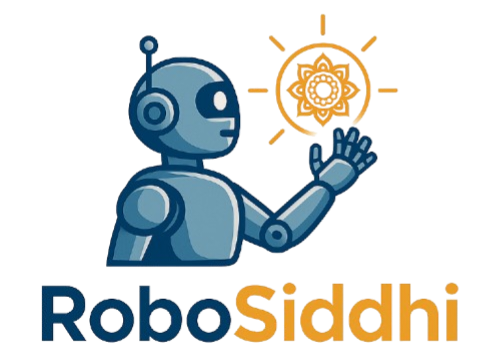Introduction to Home Robotics
The concept of home robotics has emerged as a pivotal development in the landscape of modern technology, transforming how households operate daily. Home robotics refers to the integration of automated systems and intelligent machines designed to assist with various household tasks, ranging from mundane chores to complex activities. With a growing emphasis on enhancing the quality of life, the significance of incorporating robotics into domestic settings cannot be overstated. As the pace of life increases, so does the need for innovative solutions that streamline daily responsibilities.
The evolution of robotics has transitioned from a predominantly industrial focus, where machines were utilized for manufacturing and heavy-duty tasks, to a more diversified suite of applications in domestic environments. Initially, robots were restricted to controlled environments, performing repetitive tasks that required high precision. However, advancements in technology have facilitated the development of more sophisticated and responsive systems capable of learning and adapting to their environments. This evolution has paved the way for the advent of home robotics, where devices can assist with cooking, cleaning, gardening, security, and more.
The increasing prevalence of automation has also been driven by rapid advancements in artificial intelligence (AI) and machine learning. These technologies allow robots to analyze patterns, understand preferences, and execute tasks with minimal human intervention. As a result, modern households are witnessing a significant shift towards employing robotic systems that enhance efficiency and free up valuable time for individuals. As we progress further into this technological era, the integration of home robotics is expected to grow, making it an integral part of everyday life. The future promises a transformation in how we engage with our homes, ultimately leading to increased convenience and improved living conditions.
Current Trends in Home Robotics
The landscape of home robotics is evolving rapidly, driven largely by advancements in artificial intelligence (AI) and machine learning algorithms. These technological innovations have significantly enhanced the functionality and usability of consumer robotics, making them an integral part of modern smart homes. One of the key trends is the increased intelligence of robotic devices, allowing them to perform complex tasks with minimal human intervention.
Robotic vacuum cleaners are among the most popular products on the market today, showcasing the integration of sophisticated AI. These devices utilize advanced sensors and mapping technologies to navigate homes autonomously, efficiently cleaning various floor surfaces. They can adapt their cleaning patterns based on room layout and debris density, providing convenience and effectiveness that was previously unattainable. Furthermore, many of these robotic cleaners now come equipped with smartphone applications, allowing users to control and schedule cleanings remotely.
Another notable trend in home robotics is the rising popularity of automated pet feeders. These devices offer pet owners peace of mind, as they can dispense pre-measured portions of food at specific times, ensuring pets are fed even when their owners are away. Some models include features such as video monitoring, which allows owners to check in on their pets, and customizable feeding schedules tailored to their pets’ needs. This amalgamation of robotics and smart home technology ensures that animals receive timely and appropriate care.
In conclusion, the current trends in home robotics reflect a synergy between AI advancements, improved machine learning capabilities, and the growing acceptance of smart home devices. As these technologies continue to develop, the potential for further automation within our homes escalates, promising an increasingly hands-free lifestyle for users.
Types of Home Service Robots
The modern home is undergoing a transformation with the integration of various types of home service robots designed to streamline daily tasks. Among these, cleaning robots are gaining popularity. Robots such as the Roomba and Braava are exemplary in this category, autonomously navigating spaces to vacuum floors and mop surfaces. Their programmable features and smart sensors allow them to adapt to different environments, ultimately reducing the time and effort homeowners invest in cleaning routines.
Another significant category is lawn care robots. Devices like the Husqvarna Automower and RoboMow can maintain lawns with minimal human intervention. These robots typically employ cutting-edge technology to detect grass length, navigate around obstacles, and schedule mowing according to weather conditions. By automating lawn care, they contribute to maintaining healthy gardens while freeing up valuable time for homeowners to engage in other activities.
Personal assistant robots also play a key role in the home services landscape. Products like Amazon Echo and Google Nest Hub serve not only as voice-activated devices but also act as hubs for smart home functionalities. They can manage schedules, control other smart devices, and provide real-time information, thereby enhancing the convenience of daily life. As these robots become increasingly integrated into homes, they are poised to change how residents interact with their living environments.
Delivery robots represent another innovative home service category. Companies such as Starship Technologies have developed compact robots capable of delivering groceries and packages directly to homes. These robots utilize efficient navigation systems to traverse sidewalks, providing contactless delivery options that are especially valuable in today’s fast-paced world. By minimizing the need for human couriers, delivery robots are making home deliveries more efficient and convenient.
Overall, the evolution of these home service robots is revolutionizing standard routines. As technology continues to advance, the integration of these robots into homes will likely become even more seamless, enhancing the quality of life for countless individuals.
Benefits of Utilizing Home Robots
The integration of robotics into home services is rapidly transforming the manner in which households operate, offering a myriad of advantages that enhance daily life. One of the most significant benefits is the substantial time-saving aspect robots provide. With automated systems taking over routine household tasks such as cleaning, cooking, and lawn maintenance, inhabitants can redirect their efforts towards more meaningful activities, such as spending quality time with family or immersing themselves in personal interests. This improvement in productivity is particularly noteworthy for families with demanding schedules.
In addition to saving time, home robots contribute to improved efficiency in managing household chores. For instance, robotic vacuum cleaners utilize advanced algorithms to effectively navigate through living spaces, ensuring thorough cleaning without requiring human intervention. This consistent performance means that homes can maintain a higher standard of cleanliness with minimal effort, a benefit that is especially poignant for busy parents or individuals with mobility issues.
Furthermore, the implementation of robotic systems can significantly enhance safety within the home, particularly for households with elderly members or pets. Robots equipped with monitoring capabilities can provide real-time updates, ensuring that family members remain safe and secure. For example, some smart home systems allow for surveillance cameras that can track movements and alert caregivers in case of unusual activity. Families have reported a greater sense of peace knowing that robot technologies can act as a safeguard to help prevent accidents and respond quickly to emergencies.
Real-world examples abound of families experiencing these advantages first-hand. For instance, some families have adopted robotic caregivers that assist elderly relatives with daily routines, bridging gaps in care and allowing them to maintain a more independent lifestyle. Thus, as robotic technology continues to evolve, the myriad benefits of utilizing home robots will likely permeate deeper into everyday life, enhancing comfort and security within households everywhere.
Challenges and Limitations
The integration of robotic technology into home services presents several notable challenges and limitations that must be addressed to ensure their successful adoption. One of the most significant obstacles is the high cost associated with acquiring and maintaining these advanced machines. While prices are gradually decreasing, many cutting-edge home robots remain beyond the financial reach of average consumers. This factor can hinder widespread adoption, as potential users may be reluctant to invest in technology that is perceived as luxurious.
Moreover, technical malfunctions pose another considerable challenge. Home robots, like any other technology, are susceptible to occasional failures, ranging from software bugs to hardware breakdowns. These malfunctions can lead to frustration among users and may result in unsafe situations. Additionally, the programming and integration of these robots with existing smart home systems can be complex, requiring advanced technical knowledge. Users may encounter compatibility issues or difficulties in configuring devices to work harmoniously, potentially discouraging them from utilizing these innovative solutions.
Privacy concerns represent a significant limitation as well. Many home robots are equipped with cameras, microphones, and sensors that can collect sensitive personal data. This raises questions regarding the security of such information and how it may be utilized by manufacturers or third parties. Consumers may hesitate to embrace robotic home services due to fears surrounding data privacy and the potential for surveillance.
Lastly, public perception and acceptance of robotic technologies can influence their integration into daily life. Many individuals harbor reservations about trusting machines for tasks traditionally performed by humans. The idea of having robots manage household duties may appear unsettling to some, presenting an emotional barrier to widespread acceptance. Thus, addressing these challenges while fostering confidence in the capabilities of home robots will be pivotal for their successful integration into modern households.
The Future Potential of Home Robotics
The future of home robotics holds immense promise, with advancements in technology set to revolutionize the way we approach domestic tasks. One of the key areas of focus will be advanced navigation systems. These systems are expected to improve significantly, allowing robots to navigate complex home environments seamlessly. Enhanced sensors and mapping technologies will enable robots to identify and avoid obstacles more effectively, adapting to the ever-changing landscape of a household.
Moreover, improvements in artificial intelligence (AI) interaction will play a pivotal role in the evolution of home robotics. As AI systems become more sophisticated, robots will be able to understand and respond to a wider range of commands and queries. This enhanced interaction will enable users to communicate with their robots in a more natural and intuitive manner. The integration of machine learning algorithms will also mean that these robots can learn from their interactions and adapt to the preferences and routines of the household members. This capability will lead to a more personalized experience, ensuring that robots provide meaningful assistance tailored to individual needs.
Furthermore, the concept of multi-functional robots is likely to come to fruition in the near future. Current home robots often specialize in a single task, such as vacuuming or lawn mowing. However, future innovations will pave the way for versatile robots capable of executing a diverse array of chores. Imagine a home robot that can clean floors, provide security monitoring, and even cook meals — all with the same device. This multifunctionality not only increases the value of home robots but also reduces the clutter of multiple devices, fostering a more streamlined living space.
In sum, the advent of advanced navigation, improved AI interaction, and the emergence of multi-functional robots herald an exciting future for home services. As we continue to explore the potential of robotics in our homes, the role of technology in enhancing everyday life seems boundless.
Integration with Smart Home Systems
As the landscape of home services evolves, the integration of home service robots with existing smart home systems becomes increasingly paramount. This integration not only enhances the functionality of both robots and smart home devices but also ensures a cohesive user experience. One of the most widely adopted platforms in the smart home ecosystem is Google Home, which offers users the ability to control various connected devices through voice commands and the Google Home app. This platform allows for seamless interaction with home service robots, enabling tasks such as scheduling cleaning sessions or monitoring the status of household chores.
Similarly, Amazon’s Alexa continues to dominate the smart home market, allowing users to engage with their robotic assistants effortlessly. Through the Alexa app, homeowners can customize routines, allowing the robot to execute tasks in conjunction with other smart devices like lights, thermostats, and security cameras. For instance, a user can set a routine where their robot vacuum starts cleaning once the household is detected to be empty, all controlled via a simple voice command.
Apple’s HomeKit ecosystem also provides robust integration capabilities for home service robots, prioritizing security and privacy. Users within the HomeKit environment can control compatible robots through the Home app or via Siri, enhancing functionality while maintaining a high security standard. This ability to control multiple home devices from one central hub not only streamlines daily living but also elevates the role of robots in household management.
Moreover, integration with platforms such as IFTTT (If This Then That) further expands the utility of home service robots by enabling automated actions based on specific triggers. For instance, a robot could automatically begin cleaning after motion is detected in a room, thus ensuring efficiency and convenience. The seamless communication between smart home systems and service robots represents a significant step forward in creating an interconnected, user-friendly domestic environment.
Consumer Considerations Before Purchasing
As the market for home service robots continues to expand, consumers must carefully evaluate several factors before making a purchase. Understanding the purpose behind these devices is essential. Each robot may serve different functions, such as vacuuming, lawn mowing, or even security monitoring. Identifying your specific needs will help narrow down your options and ensure you choose a robot that effectively addresses those requirements.
Another critical aspect to consider is compatibility with existing devices. Many home service robots are designed to integrate into smart home ecosystems. Before committing to a purchase, check if the robot can seamlessly connect with your current devices, such as smart assistants, home security systems, or Wi-Fi networks. Compatibility can enhance the functionality of the robot, allowing for a more cohesive and user-friendly experience.
Customer service and support are equally important when selecting a home service robot. A reliable manufacturer should provide accessible customer support that can assist with setup, troubleshooting, or maintenance. Before purchasing, look into the availability of resources such as user manuals, online forums, and dedicated service lines. Evaluating the manufacturer’s reputation can help ensure that you will have assistance when required.
Warranty options should also be considered, as they can provide peace of mind in case of unexpected malfunctions. Most reputable brands offer warranties that cover repairs or replacements, but the length and terms can vary significantly. Understanding these details can protect your investment in the long run.
Lastly, user reviews and feedback are invaluable resources. By reading about the experiences of other consumers, you can gain insights into the performance and reliability of different models. Pay attention to both positive and negative reviews to develop a balanced perspective, inform your decision, and enhance your satisfaction with your chosen home service robot.
Conclusion: Embracing the Robotic Revolution in Home Services
As we advance into an era marked by rapid technological progress, the integration of robotics in home services stands out as a transformative force. This revolution is not merely about the novelty of robotic companions; it encapsulates a broader ambition of enhancing our daily lives through innovation. The deployment of robotics in domestic tasks promises not only to streamline household management but also to empower individuals by freeing up their time for more enriching activities. From robotic vacuum cleaners to automated gardening systems, these technologies are designed to make life easier, thereby improving overall well-being.
However, the adoption of robotics in home services extends beyond mere convenience. It represents a paradigm shift in how we envisage domestic responsibilities. As robotics technology continues to evolve, we find ourselves in a dynamic landscape where capabilities are continuously expanding. It is essential for individuals to remain informed about the latest advances in this field. Understanding how robotics can function within a home setting allows for more informed decisions, whether one is considering purchasing a smart appliance or evaluating a whole-home automation system.
Furthermore, as we embrace the robotic revolution, it is crucial to consider the implications of these technologies on our lifestyles. The introduction of automation into our homes should not be viewed with trepidation, but rather as an opportunity to cultivate a more efficient environment. By evaluating which tasks can be delegated to robots, homeowners can significantly enhance their quality of life. This shift also raises questions about the future of work and domestic roles, prompting important discussions about the balance between human touch and robotic assistance. In conclusion, embracing robotics in home services is pivotal for those looking to navigate the challenges and conveniences of modern living. As we progress into this new era, being proactive and engaged will ensure that we harness the full potential of these advancements.

